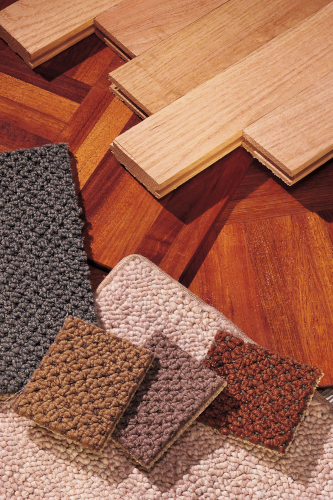
Planning and Engagement Processes
LCA Key Terms
The following list of terms is not exhaustive but includes the main terms you will need to understand when reading, evaluating, or interpreting an LCA report. An exhaustive list can be found at LifeCycleInitiative.org![]() .
.
Embodied energy reflects the total energy used to bring a product into its current state. For example, a ceiling tile is shipped to a consumer (which requires energy), the ceiling tile was processed out of input materials at the manufacturing facility (which requires energy), and those input materials were extracted from raw materials, processed, and shipped to the factory (which requires energy). The sum of all that energy is the embodied energy in the ceiling tile.
Operating energy is the energy required to operate a system, such as the total energy consumed by a building during its lifetime.

A quantitative expression of the product being studied, addressing the function, the quantity, the performance, and the time. The functional unit is the same across alternatives being studied. For example, the following functional units could be used:
- Light Bulbs: in its LCA of lightbulbs
 , DOE used 20 million lumen-hours as the functional unit since that was the average light output over the lifetime of a single 60W LED bulb in 2011. It would take 22 incandescent bulbs, or 3 CFLs to achieve the same lifetime light output
, DOE used 20 million lumen-hours as the functional unit since that was the average light output over the lifetime of a single 60W LED bulb in 2011. It would take 22 incandescent bulbs, or 3 CFLs to achieve the same lifetime light output - Floor Coverings: from the NIST BEES Manual
 , the functional unit for floor covering alternatives is covering 0.09 m2 (1 ft2) of floor surface for 50 years
, the functional unit for floor covering alternatives is covering 0.09 m2 (1 ft2) of floor surface for 50 years - Roof Coverings: Covering 9.29 m2 (1 square, or 100 ft2) of roof surface for 50 years
- Concrete Beams and Columns: 0.76 m3 (1 yd3) of product service for 50 years

Specific areas of ecosystem quality, resource use, or human health that are quantified in the LCA, such as Acidification, Eutrophication, Global Warming , Ozone Depletion, Human Health (Particulate), Human Health (Cancer), Human Health (Non-cancer), Ecotoxicity, Photochemical Smog Formation, and Resource Depletion (from EPA’s Tool for the Reduction and Assessment of Chemical and Other Environmental Impacts (TRACI)![]() ).
).
Many product labels and certification programs certify products based on life cycle parameters and address many different environmental issues, making them multi-attribute programs. These parameters may include energy use, recycled content, and air and water emissions from manufacturing, use, and disposal. Others focus on a single life cycle stage or a single environmental attribute, such as water, energy, or chemical emissions that directly impact IEQ.
A set of rules and guidelines for developing EPD for a specific product or type of product. A PCR will specifically define a functional unit. While PCRs have been developed using international consensus processes, they can be industry-wide (for a given type of product) or for a specific product. PCR are particularly useful where the environmental impacts of products within a category group are to be compared.

The International Organization for Standardization (ISO) develops standards internationally agreed upon by experts. Examples of standards related to life cycle assessment include:
- ISO 14040
 and 14044
and 14044 describe the basic framework for an LCA, including the goal and scope, the inventory, the impact assessment, the interpretation, the limitations, and guidelines for communication, with 14044 providing more detail about LCA technique.
describe the basic framework for an LCA, including the goal and scope, the inventory, the impact assessment, the interpretation, the limitations, and guidelines for communication, with 14044 providing more detail about LCA technique. - ISO 14025
 specifies how Type III environmental labels and declarations (Environmental Product Declarations) are created.
specifies how Type III environmental labels and declarations (Environmental Product Declarations) are created. - ISO 21930
 describes the rules and guidelines for creating product category rules (PCRs) that are used for EPDs of construction products.
describes the rules and guidelines for creating product category rules (PCRs) that are used for EPDs of construction products. - ISO 21931
 and EN 15978:2011
and EN 15978:2011 define frameworks for assessing sustainability of buildings
define frameworks for assessing sustainability of buildings
System boundary is defined as an interface between a product system and the environment or other product systems. It defines the activities and processes that will be included in each life cycle stage for the LCA analysis and those that will be excluded.

As a step in rating or certification, a third-party may review the data and analysis behind an LCA or EPD. Generally, internationally-adopted ratings, standards, or certifications require independent third-party review, and you can put greater trust in systems with such validation.
